18 Best Things to Do in Semarang, Central Java
This post may contain affiliate links. If you make a purchase using one of these links, I may receive a small reward at no extra cost to you. See my Disclosure Policy for more information.
Semarang is a city often overlooked in favor of its bigger sisters Jakarta and Surabaya, its better-located brothers Malang and Bandung, and its culturally rich aunt Yogyakarta. I just listed all the big cities on Java, I know.
Hear me out though – Semarang is cool, has a nice vibe, and is well worth a 2-day detour from the popular Java backpacking trail.
So what’s there to do in Semarang? A bunch of things from Chinese temples and Javanese mosques to quirky colorful kampungs and Dutch colonial remnants.
Quick History of Semarang
“Asem Arang“, said the Javanese Prince Ki Ageng Pandan Arang, sailing on a boat right off the coast of Central Java and looking at the beach.
“I guess I’ll call this place by the many tamarind trees that I see on the shores. This is rare!“, he said.
Or maybe he didn’t say that. But one thing is certain – Semarang got its name in the 15th century by combining the Javanese words Asem (Tamarind) and Arang (Rare).
I didn’t see a single tamarind tree in Semarang. But it’s been 6 centuries, so who knows, perhaps the story is true.
In the 17th century, the Dutch with their VOC company were encroaching on the lands of local rules in Java. Semarang was a juicy tamarind and soon became a valuable port.
It is here that railway transport in Java began. Indonesia (back then it was Dutch East Indies) was the second Asian country to develop rail transport after India with a line between Semarang and Surakarta (Solo) and later Yogyakarta (Jogja).
After a brief period of Japanese occupation during WW2, Semarang was first returned to the Dutch in 1946 and then became an intrinsic part of the nascent Indonesian Republic. Today it’s the capital of the Central Java Province.
18 Best Things to Do in Semarang
Here are the places in Semarang that I found to be the most worth a visit.
1. Lawang Cewu
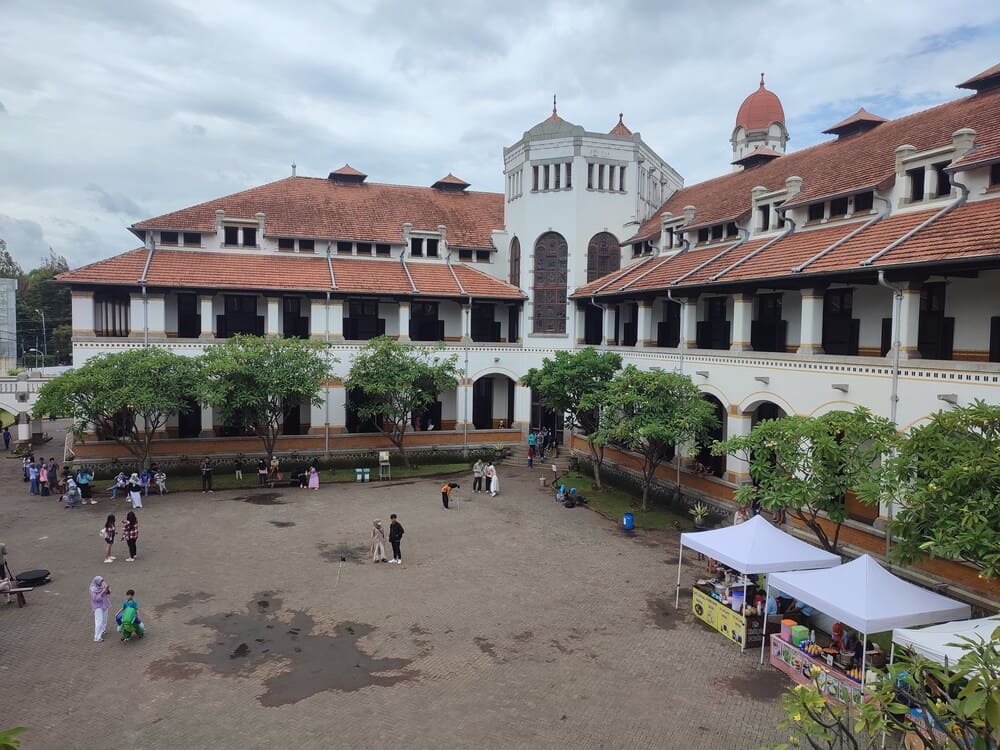
In the heart of Semarang is its most notable Colonial building – the former headquarters of the Dutch East Indies Railway Company.
Lawang Cewu is actually its nickname in Javanese and means “A Thousand Doors”. While there aren’t as many as 1000 doors, the interior of the building is indeed peculiar. It is a bit reminiscent of a prison and unfortunately, most of the rooms are empty too.
In some rooms, there are small art exhibitions, the history of rail transport in Java and Sumatra, and information about Lawang Cewu’s history. Very little is written in English though.
- Opening times: Every day 8:00 to 20:00
- Price: 30.000 IDR (2.05$) for foreigners.
2. Sam Poo Kong Chinese Temple
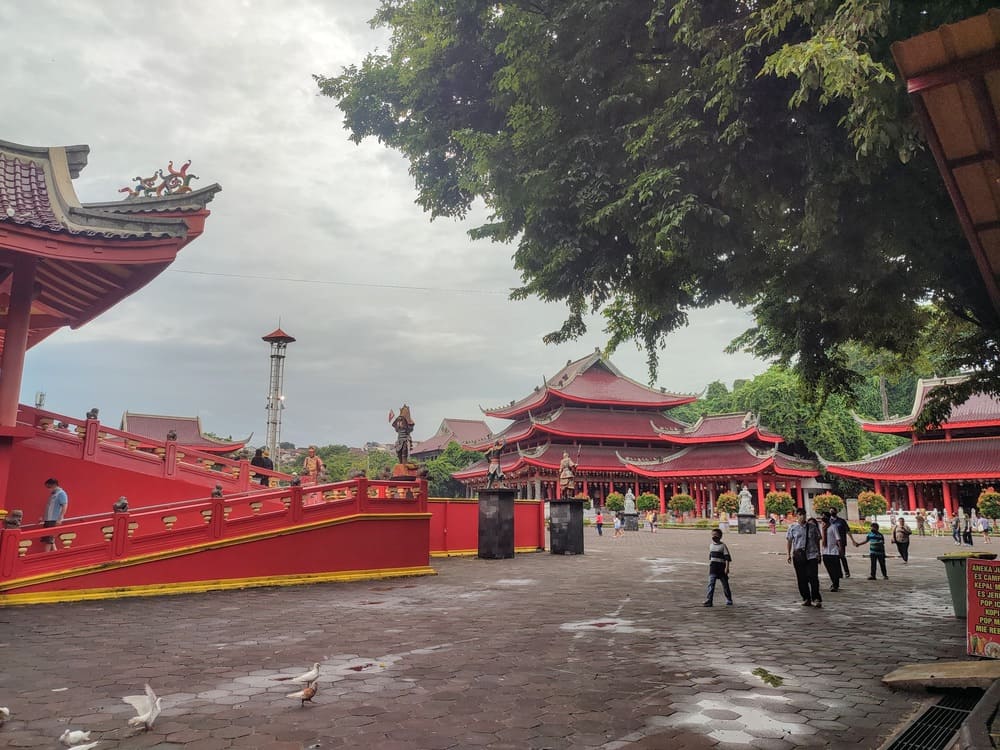
There once lived a great Chinese mariner and explorer who commanded at least 7 voyages all around Southeast Asia, South India, and even East Africa. His name was Zheng He, also respectfully called Ma Sanbao, a name referencing the Buddhist ideology of Triratna or the 3 jewels.
Zheng He landed in what is now Semarang in the early years of the 15th century. In a cave nearby he prayed. He liked the area so much that left some of his crew on Java when he departed. It is them who founded Sam Poo Kong.
The temple has been through a lot over the years. Most significantly, in 1704 the temple was destroyed by a landslide and rebuilt only 20 years later.
A couple more renovations throughout the centuries and you have a magnificent Chinese temple in the center of Semarang today.
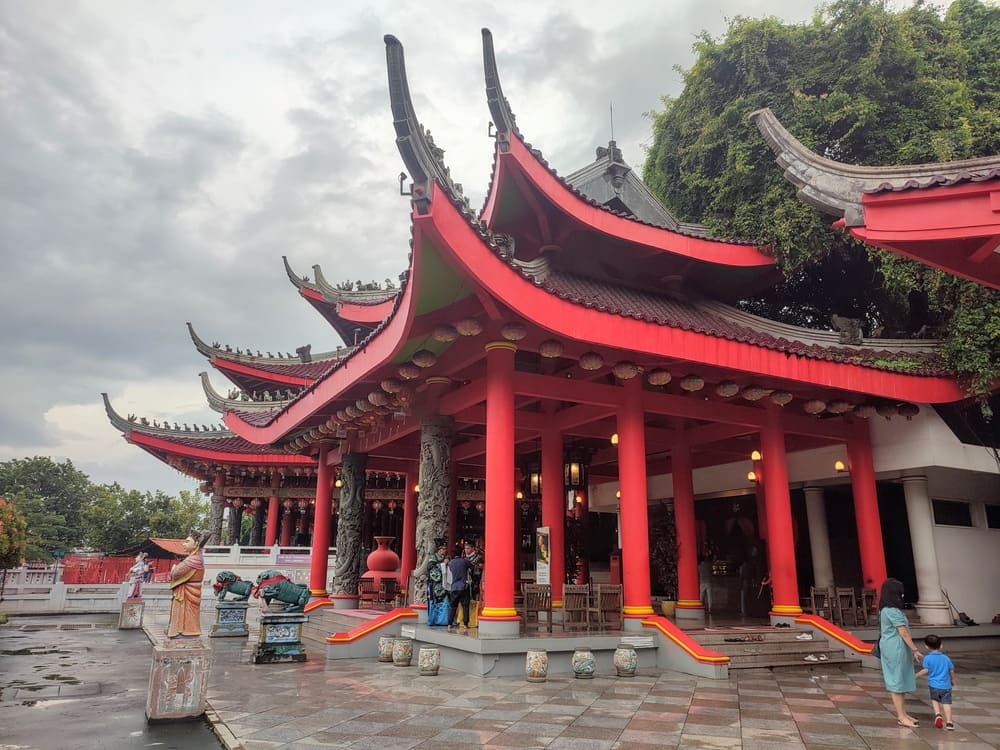
Entrance fees to Sam Poo Kong are a bit complicated. It costs 20.000 IDR for locals and 35.000 IDR (2.4$) for foreigners to enter during the week (Mon-Thu).
On the weekend the prices are higher: 25.000 IDR for locals and 40.000 IDR (2.7$) for foreigners.
On top of that, if you want to enter the deepest places for prayer, it’s 20.000 IDR extra.
- Opening Times: Every day 9:00 to 20:00;
- Price: 35.000 to 60.000 IDR (read above).
3. Tay Kak Sie Temple

At one point in history, the caretaker (owner) of Sam Poo Kong started charging the local Buddhists so much that they couldn’t afford to pay to maintain the temple and instead created a new one. This one: Tay Kak Sie.
Tay Kak Sie was originally just a single pagoda to worship the Goddess of Mercy, Guan Yin, but today it has shrines to over 10 different deities.
In front, on the street of the temple, there are traffic signs with the 12 zodiac signs of the Chinese Calendar with a short fortune reading for each.
- Opening Times: Every day 7:00 to 22:30;
- Price: FREE!
4. Vihara Buddhagaya Watugong
Buddhism was the dominant religion in Java up until the 15th century when Islam spread. Vihara Buddhagaya Watugong has its roots as a Buddhist temple since the Majapahit period back in the 14th and 15th centuries.
It fell into disrepair for 5 centuries until religious tolerance was again high enough in the early 1900s to revitalize the site. Today it is one of the biggest Buddhist temples in Indonesia.
On the grounds of the temple, you’ll find the main building – Yayasan Buddhagaya, and two impressive pagodas – the Pagoda Budhagaya and the Pagoda Avalokitesvara, which is the tallest pagoda in Indonesia!
Vihara Buddhagaya Watugong is connected to Semarang’s public transport network and buses 2 and K1 go there. It’s free to enter.
- Opening times: Every day 8:00 to 21:00;
- Price: FREE!
Kota Lama
Kota Lama is the Old Town of Semarang. Full of preserved colonial architecture and very photogenic places, Kota Lama is the most visited area of Semarang.
5. Museum Kota Lama
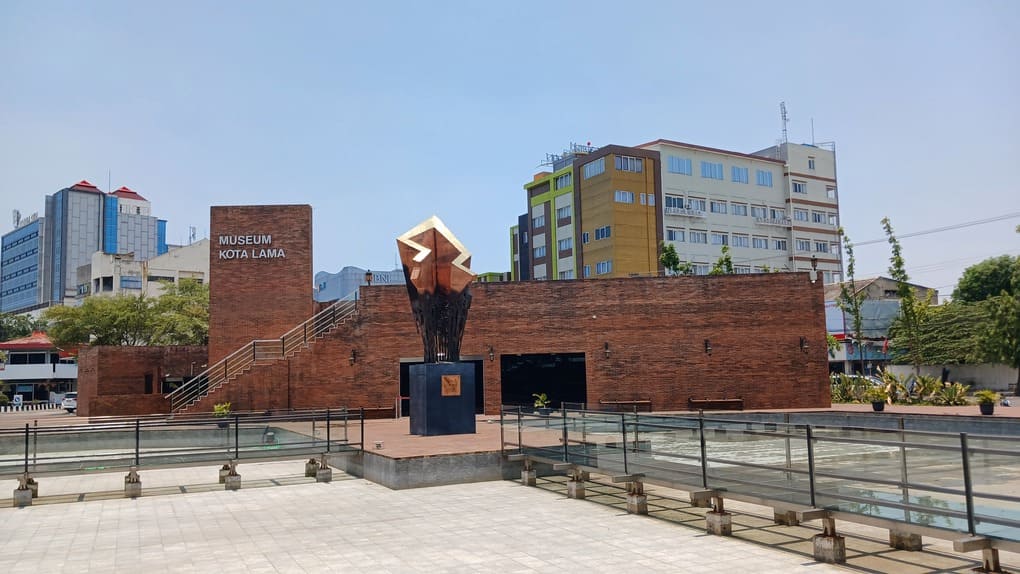
While in the Old Town, don’t forget to visit the Museum Kota Lama. It’s free to enter and has a nice collection of memorabilia from the ages past.
Entrance to the museum is only at set times: at 10:00, 11:00, 13:00, 14:00, and 15:00 on Tuesday to Friday and additionally at 9:00 only on weekends. The museum is closed on Mondays.
You must book a slot via the Lunpia app. At the entrance, you will be met by a tour guide who will tell you about the history of Kota Lama and the museum. They speak English too!
The tour lasts about 45 minutes and is completely free.
6. GPIB Immanuel Semarang
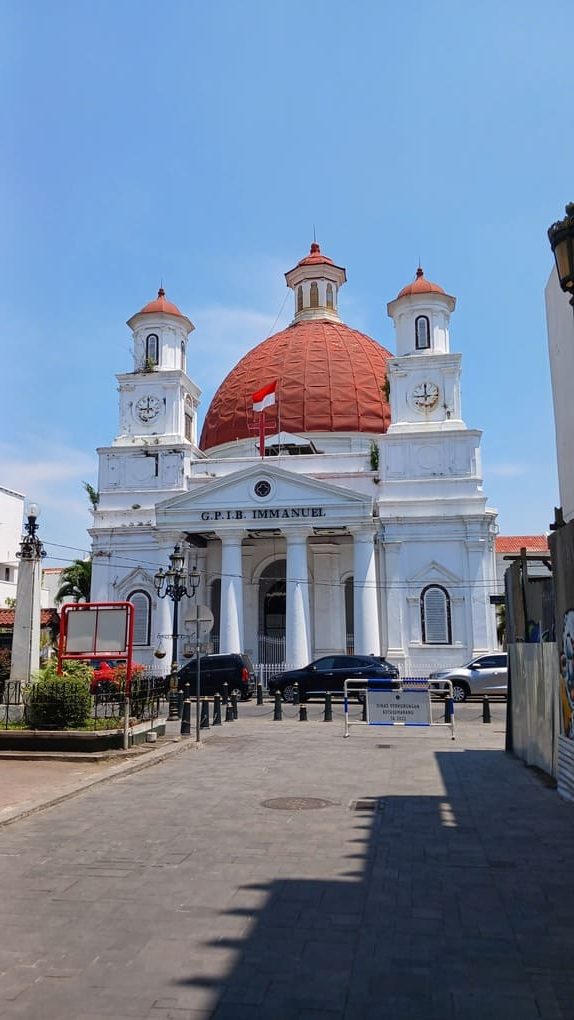
Right in the heart of Kota Lama, you can’t miss the protestant church named after Immanuel. It’s also called Gereja Blenduk and was built in 1753.
When the Dutch settled in Semarang, they made it a home away from home. The architecture of the buildings on Kota Lama reflects that – you may feel like you’re in Western Europe at times.
7. Kampung Batik
The first thing that catches the eye in these few blocks of Semarang is the intricate murals on some of the streets. Fabulous! Batik on the walls!
This is where you can find batik to buy in Semarang. While the batik market is not as big as the one on Malioboro Street, Yogyakarta, it is still worth a short visit while you’re in Kota Lama.
Best of all – if you are on the lookout for a batik shirt, the prices here are incredibly affordable! Some shirts are as cheap as 30.000 IDR (2$)!
- Opening Times: Every day 7:00 to 20:00;
- Price: FREE to enter. A batik shirt costs between 30.000 to 100.000 IDR (2$ – 6.7$);
8. Kampung Pelangi

I’m a sucker for Indonesian kampungs! The kampung is a neighborhood characterized by small alleys, 1-2 story houses, and tightly-knit communities.
I love them because they offer a bit of silence in the overwhelming noise that Indonesian streets bring and also because the people I meet in kampungs are just so nice!
Kampung Pelangi is no different in this regard. Its alleys are even curvier than usual and the whole kampung is situated on a slope giving it sort of an Amalfi feel. I’m probably the first in the world to make this connection, so go see for yourself!
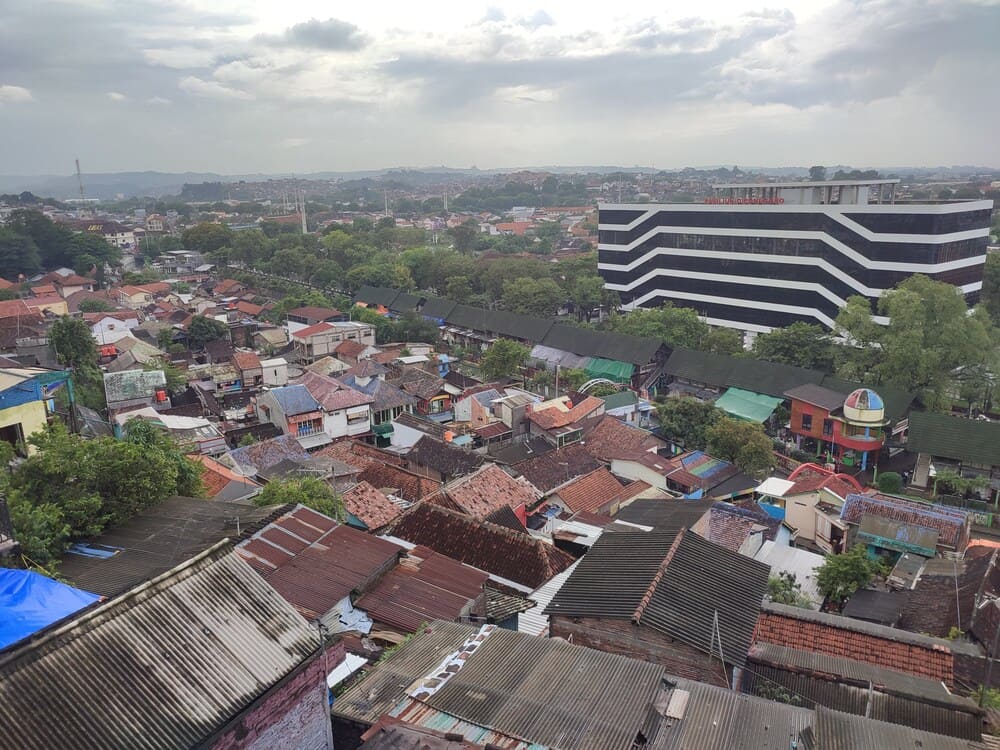
Kampung Pelangi’s houses are painted with the colors of the rainbow. The whole neighborhood is bright, welcoming, and even a little flamboyant.
My personal recommendation: don’t miss eating at a home-run warung during your journey inside the kampung.
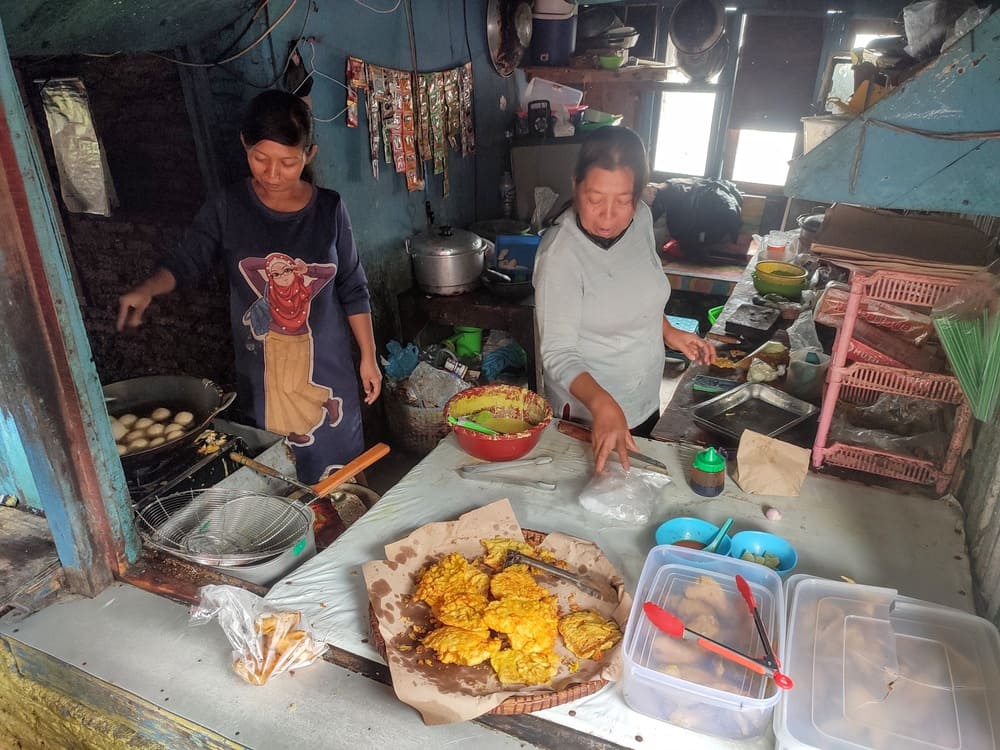
These are kitchens with windows towards the street where you can sit down, pick food off the table, and eat. Homemade meals are the best!
9. Thematic Kampung Jawi
Talking of kampungs… Kampung Jawi is not your usual kampung. It’s not an authentic neighborhood, but more of a tourist attraction. Don’t let this fact sway you away though. It’s a unique place worth a visit.
Everything in Kampung Jawi is organized around a Javanese theme. You exchange your money for kepeng (historical Javanese coins) which you then use to buy things. 3000 rupiah equals 1 kepeng. There are drinks like iced tea, syrup, or lemonade, and plenty of Indonesian street food snacks like fried tempura, sosis bakar, and bakso.
Go there in the evening around 7 PM when the lanterns light up and create a magical atmosphere. The nearby river and the music also make this place a micro 1920s Javanese village and a perfect night out.
To go there by public transport, take bus 8 from in front of Lawang Sewu.
- Opening Times: Every day 16:00 to 22:00;
- Price: FREE!
10. Masjid Agung Jawa Tengah (Great Central Java Mosque)

This is the biggest mosque in all of Central Java (Jawa Tengah). It was finished in 2006. Masjid Agung Jawa Tengas was built in a mixture of Roman and Javanese styles and looks like a joglo – a traditional Javanese house with a slowly sloping roof.
To recognize the Roman influences, look no further than the 25 pillars in front of the mosque.
On the grounds of the Great Central Java Mosque you’ll also find:
- 6 large hydraulically operated umbrellas so Muslims can pray even when it rains;
- 25 Roman-inspired pillars symbolizing 25 prophets;
- The 99-meter-tall Al Husna Tower, the number representing the 99 names of Allah;
- On floors 2 and 3 of the tower is the Museum of Islamic Culture;
- On floor 18 is a rotating, 360-degree cafe;
- On floor 19 is a viewing platform;
- A smaller replica of the Kaaba from Mecca.
Masjid Agung Jawa Tengah is culturally linked to Masjid Kauman Semarang;
11. Masjid Kauman Semarang (Semarang Central Mosque)
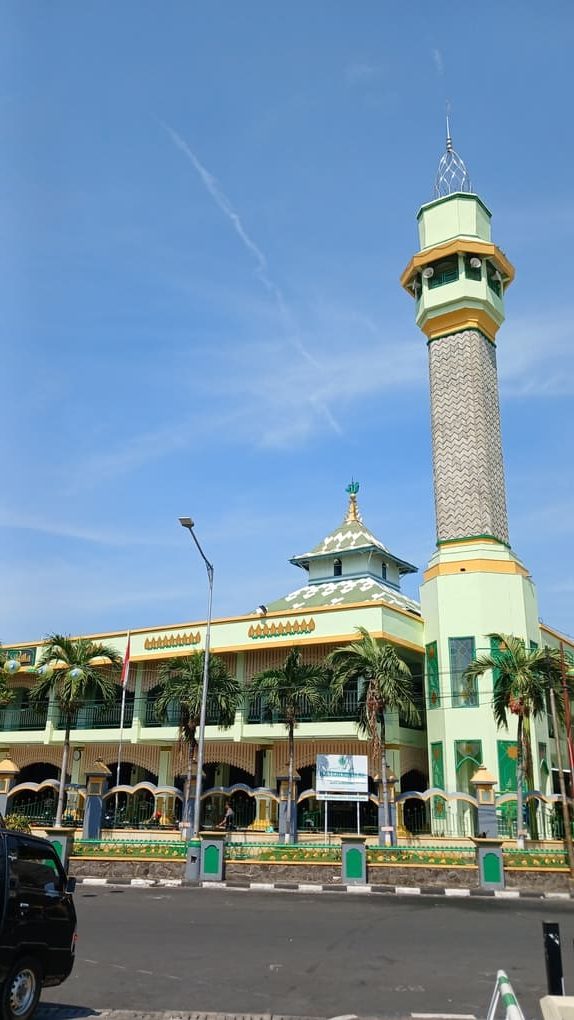
Masjid Kauman Semarang is the oldest mosque in Semarang. It dates back to 1749 and is tightly linked to the history and founding of the city.
Today the mosque is also a cultural heritage right in the center of the old city.
A fun fact about Masjid Kauman Semarang is that it was the only mosque in Indonesia to publicly announce the proclamation of independence on 17 August 1945 just moments after it was declared in Jakarta by Sukarno and Hatta.
12. Aloon Aloon Semarang
Right next to Masjid Kauman Semarang, you will find the main square in Semarang.
While usually it’s spelled “Alun-Alun”, for one reason or another, Semarang has decided to be different and spells it “Aloon-Aloon”.
During the day it’s a pretty uneventful place. But go after sunset and you will find over 100 street vendors and stalls selling all sorts of different foods – steaks, seafood, rice and noodles, finger food, and whatnot.
Check out my Indonesian savory snacks and my Indonesian desserts to know what to look for.
13. Simpang Lima Alun Alun (Public Square)
The name comes from Simpang = Intersection and Lima = five, thus the intersection of 5 streets. Not very original, I know.
What this place lacks in charm, it makes for in choice. Go there after 18:00 to try some typical Javanese and Indonesian snacks, drinks, desserts, and meals.
If there’s no food on a list of things to do in Semarang, then it’s not a good list!
14. Semawis Night Market

Since we’re talking night markets… Semawis Waroeng is the place to go in Semarang. It’s only open on the weekend (including Friday) and has very pleasant Chinese vibes, which is atypical of Indonesian night markets.
There’s a wide variety of snacks and food offered at Semawis, so bring some cash and go hungry!
I recommend you try Lumpia – a snack commonly associated with Semarang that is a deep-fried spring roll.
The Semawis Night Market is open on Friday, Saturday, and Sun from 18:00 to 23:00.
15. Brown Canyon

Indonesians compare the Brown Canyon to the Grand Canyon in the US. That’s so funny, considering the miniature scale of the former compared to the latter.
The Brown Canyon is a mining excavation project that formed surprisingly beautiful cliffs.
The Brown Canyon is still an active mining site, so go there outside of working hours. Otherwise, prepare a face mask and goggles.
16. Museum Ranggawarsita
Museum Ranggawarsita is the largest museum in Central Java. This museum has a collection of history, nature, archeology, and culture about the whole Indonesian Archipelago.
All in all, 59,810 collection pieces are divided into 10 categories: geology, biology, archeology, philology, history, numismatics, heraldry, ceramics, technology, ethnography, and fine arts.
It is a very comprehensive museum and given the extremely low price is a must-visit for anyone in Semarang.
- Opening times: Every day 8:00 to 15:00;
- Price: 6000 IDR / 0.4$.
17. Mangrove Edupark
Mangrove Edupark is located on the coast behind Semarang Airport. There are a bunch of wooden plank paths around the park that lead you through the mangrove forest. It’s a nice place for pictures and if you’re lucky, you might get an awesome shot of a landing aircraft from up close!
Pro tip: Take mosquito repellent!
- Opening times: Every day 8:00 to 17:00;
- Price: 7500 IDR / 0.5$.
18. Marina Beach
It’s not your usual beach as there isn’t really any sand and it’s mostly just a paved seafront boardwalk with street food vendors and good opportunities for sunset pictures.
Where to next?
If you’re going east, your next stop could be Surakarta, Surabaya, or Malang. You may also want to read about Mount Bromo and Madakaripura Waterfall.
If you’re going west, your next stop could be the Dieng Plateau or Bandung.
South of Semarang is the cultural capital Yogyakarta and nearby are the temples Borobudur and Prambanan.
My 14-day Java Itinerary can also prove helpful.


